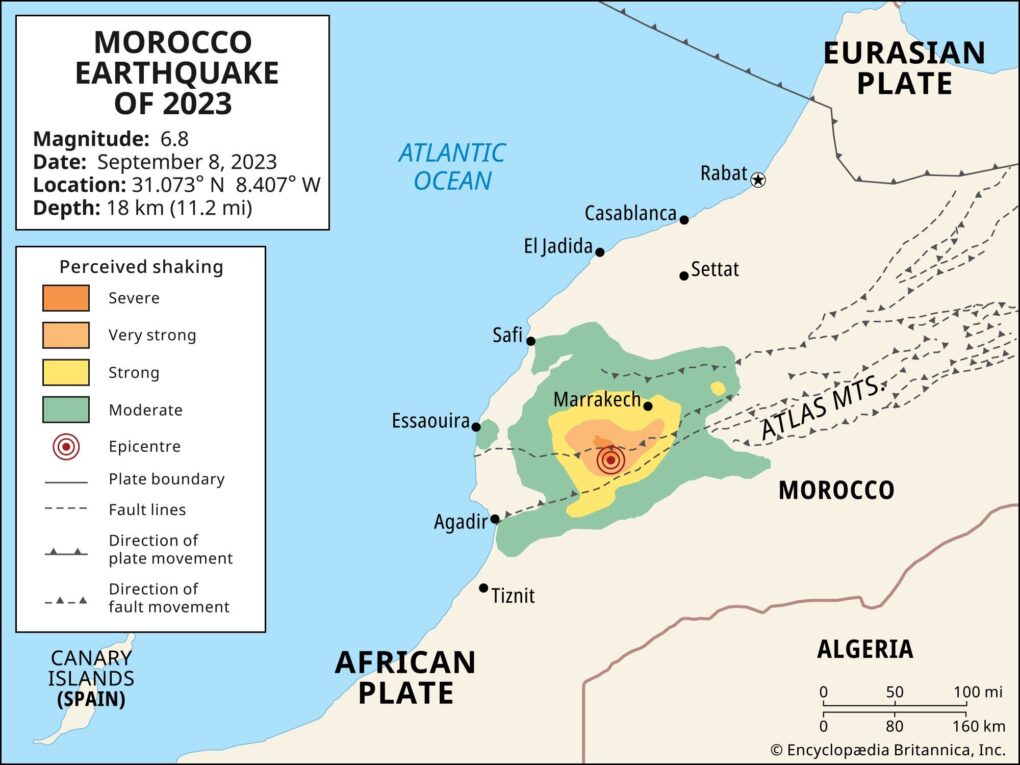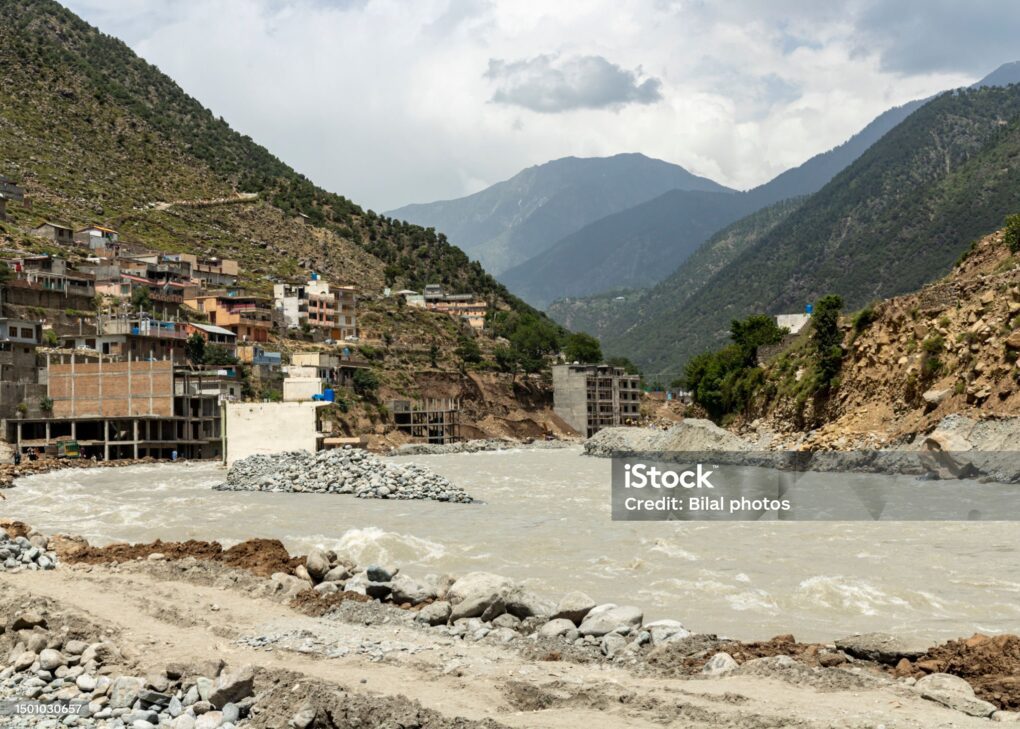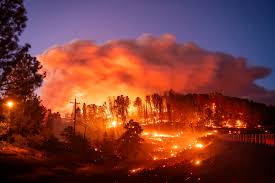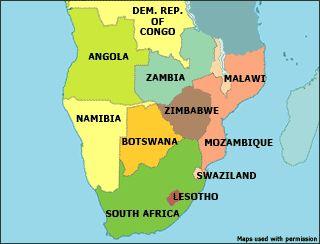The BBC has reported that at least 630 people have died so far in the 6.8 magnitude earthquake that hit Morocco September 8, 2023 at 23:11 local time (22:11 GMT) on Friday. Whereas a renowned Pakistani TV channel Geo and Aljazeera have reported 820 dead and 672 injured.
Violent tremors also sent people running from buildings in Marrakesh. Tremors were felt in coastal cities of Rabat, Casablanca, Agadir and Essaouira. The historic Medina in Marrakesh has been impacted by the tremors.

By September 14, 2023 the death toll has risen to 2,946 and 5,674 people have been injured. (ECHO, 14 Sep 2023) 300,000 people have been affected. It’s thought that the death toll will rise according to British Red Cross.
According to the US Geological Survey the epicenter was in the High Atlas Mountains, 71km (44 miles) south-west of Marrakesh, at a depth of 18.5km. According to media reports it’s the biggest earthquake since 6.3 magnitude earthquake in Al Hoceima in 2004. This earthquake is already being termed as the deadliest since 1960s.

Distressed residents had to spend the night outside after the earthquake. Authorities have warned that people should stay away from the buildings that “are not strong because they are prone to collapse” (Aljazeera). More aftershocks are expected in the coming days.
The earthquake has caused significant damage.
Damage near the epicentre is widespread. The death toll is expected to rise as search and rescue teams reach hard-hit areas in the isolated High Atlas Mountains. Priority needs are shelter, water, food, blood donations and medical kits.
Power is down in the affected areas, along with mobile and internet coverage. Water supply has also been damaged.
Several violent aftershocks have struck the region, hampering relief efforts, with more expected in the coming hours and days. People are sleeping outside, as buildings are too unsafe to re-enter.
Structural damage has been reported in many areas, with many buildings collapsed or significantly damaged. There are reports of internal displacement with many leaving villages and travelling to urban areas in search of shelter and humanitarian assistance.

The humanitarian needs are great. Many people have nothing and are in desperate need of clean water, food and shelter. With bodies being recovered from the rubble and aftershocks sparking flashbacks, many people are in psychological distress.
As always happens the poor suffer the most in crisis situations. According to Center for Disaster Philanthropy, although Marrakesh and Taroudant have higher levels of relative wealth, the earthquake “occurred in a predominantly rural and mountainous area with low levels of relative wealth particularly near the epicenter.” These mountain villages are very remote and hard to reach with aid and resources. Because of telecommunications outages, they are mostly cut off from the rest of the region.
The IFRC has launched an emergency appeal for 100 million Swiss francs to scale up the relief efforts of the Moroccan Red Crescent. Funding raised will help the Moroccan Red Crescent to provide health services, clean water, sanitation and hygiene, shelter, relief items, food, livelihoods support, protection and community engagement activities.





Leave a Reply